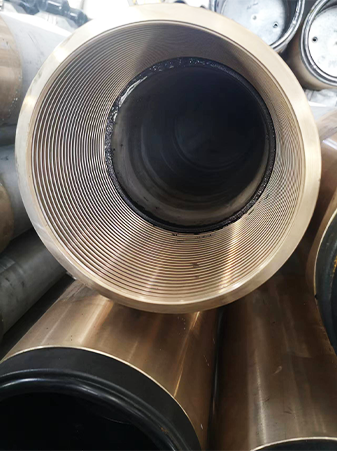- Afrikaans
- Albanian
- Amharic
- Arabic
- Armenian
- Azerbaijani
- Basque
- Belarusian
- Bengali
- Bosnian
- Bulgarian
- Catalan
- Cebuano
- Corsican
- Croatian
- Czech
- Danish
- Dutch
- English
- Esperanto
- Estonian
- Finnish
- French
- Frisian
- Galician
- Georgian
- German
- Greek
- Gujarati
- Haitian Creole
- hausa
- hawaiian
- Hebrew
- Hindi
- Miao
- Hungarian
- Icelandic
- igbo
- Indonesian
- irish
- Italian
- Japanese
- Javanese
- Kannada
- kazakh
- Khmer
- Rwandese
- Korean
- Kurdish
- Kyrgyz
- Lao
- Latin
- Latvian
- Lithuanian
- Luxembourgish
- Macedonian
- Malgashi
- Malay
- Malayalam
- Maltese
- Maori
- Marathi
- Mongolian
- Myanmar
- Nepali
- Norwegian
- Norwegian
- Occitan
- Pashto
- Persian
- Polish
- Portuguese
- Punjabi
- Romanian
- Russian
- Samoan
- Scottish Gaelic
- Serbian
- Sesotho
- Shona
- Sindhi
- Sinhala
- Slovak
- Slovenian
- Somali
- Spanish
- Sundanese
- Swahili
- Swedish
- Tagalog
- Tajik
- Tamil
- Tatar
- Telugu
- Thai
- Turkish
- Turkmen
- Ukrainian
- Urdu
- Uighur
- Uzbek
- Vietnamese
- Welsh
- Bantu
- Yiddish
- Yoruba
- Zulu
Exploring the Interactions and Relationships in Coupling and Casing Dynamics for Enhanced Performance
Understanding Coupling and Casing in Engineering Applications
In various engineering fields, particularly in the oil and gas industry, the concepts of coupling and casing are critically important. Coupling pertains to the joining of two distinct components, enabling them to work together effectively. Casing, on the other hand, refers to the protective layers or structures that safeguard equipment and enhance operational integrity. Together, these elements play a significant role in ensuring the reliability and efficiency of machinery and processes.
The Concept of Coupling
Coupling serves as a mechanical connection between two rotating shafts, allowing for the transfer of power and motion. There are various types of couplings, including rigid, flexible, and universal couplings, each designed for specific applications. Rigid couplings are primarily used where shafts are precisely aligned, as they do not allow for any misalignment. In contrast, flexible couplings accommodate slight misalignments and vibrations, making them popular in scenarios where equipment may experience thermal expansion or other dynamic forces.
The choice of coupling depends on several factors, such as the nature of the application, the torque requirements, and environmental conditions. Proper selection is crucial, as an inappropriate coupling can lead to excessive wear and tear, energy losses, and ultimately equipment failure. In sectors like renewable energy, where efficiency is paramount, innovative coupling designs contribute significantly to overall system performance, influencing everything from wind turbines to hydroelectric generators.
The Role of Casing
Casing, particularly in the context of the oil and gas industry, refers to the protective metal pipe that is installed in wells to provide structural integrity and protection against the contaminants during drilling operations. Casing ensures that the well maintains its integrity and protects surrounding formations, preventing the collapse of the wellbore. Cement is often pumped down the casing to secure it in place and to isolate different pressure zones, ensuring that the production process is stable and safe.
coupling casing

Casing comes in various sizes and designs, tailored to specific geological conditions and operational requirements. The choice of casing material, often steel or alloy compositions, is crucial to withstand the harsh conditions of subsurface environments, including high pressures and corrosive fluids. Well-designed casing systems can significantly enhance the operational lifespan of a well, facilitating more efficient extraction processes and minimizing the risk of leakage that can have environmental consequences.
The Interplay Between Coupling and Casing
In many engineering systems, particularly in the oil and gas sector, coupling and casing work in concert to optimize performance and safety. For instance, in the drilling process, the drill string, which is composed of multiple segments coupled together, must be efficiently encased to prevent collapse and fluid ingress. The integrity of both the coupling system and the casing design is paramount; any failure in either can lead to catastrophic accidents, including blowouts and spills.
Moreover, advancements in materials science and engineering have led to the creation of high-strength, corrosion-resistant couplings and casings, allowing for deeper and more challenging drilling projects. Technologies such as real-time monitoring and digital twins are being integrated into these systems to ensure that any potential issues can be identified and addressed proactively, enhancing safety and efficiency.
Conclusion
In summary, coupling and casing are integral components of modern engineering applications, especially in demanding environments such as oil and gas extraction. By understanding their roles and choosing the appropriate types for specific applications, engineers can ensure not just operational efficiency but also safety and environmental protection. The continued innovation in these areas reflects the industry's commitment to enhancing performance while minimizing risks.
-
Tubing Pup Joints: Essential Components for Oil and Gas OperationsNewsJul.10,2025
-
Pup Joints: Essential Components for Reliable Drilling OperationsNewsJul.10,2025
-
Pipe Couplings: Connecting Your World EfficientlyNewsJul.10,2025
-
Mastering Oilfield Operations with Quality Tubing and CasingNewsJul.10,2025
-
High-Quality Casing Couplings for Every NeedNewsJul.10,2025
-
Boost Your Drilling Efficiency with Premium Crossover Tools & Seating NipplesNewsJul.10,2025







